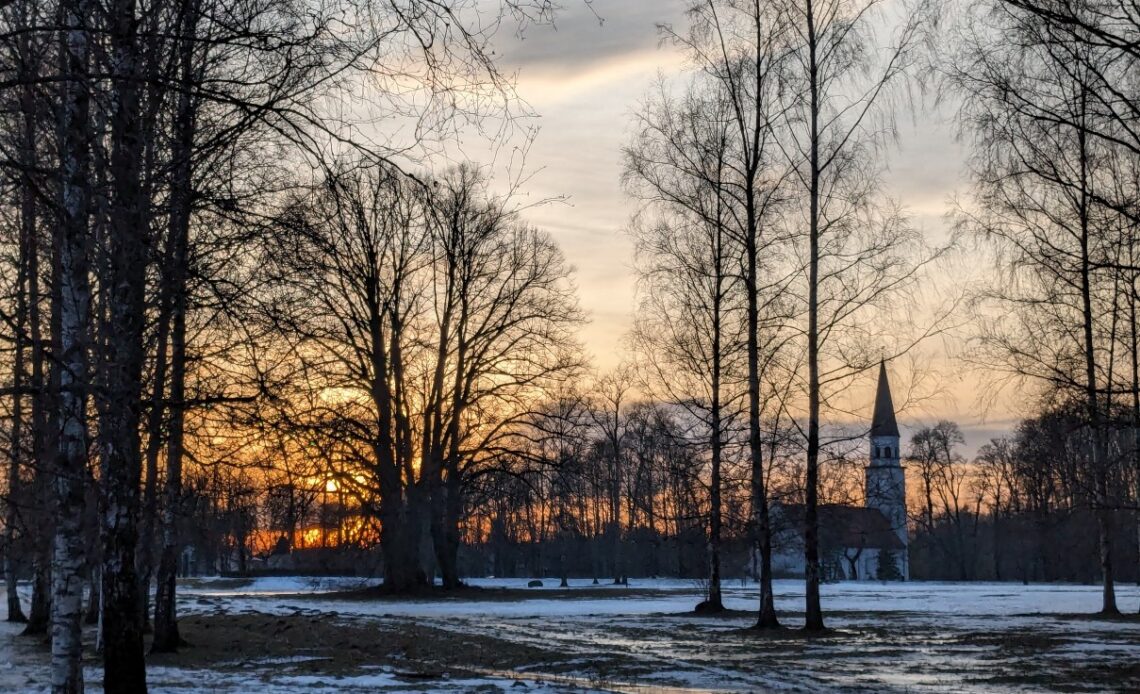
Why did I visit Latvia’s Gauja National Park in winter? I’m a big fan of snow. I love snow. My favourite thing to do in the snow? Go hiking.
So after years of being disappointed by the lack of snow in Cologne, I decided to book myself a winter-y break somewhere snowy. Knowing that there was a big national park just an hour outside Riga (and hoping that it would cost a lot less than Norway or Sweden), I decided on Latvia and late January.
Did my hiking trip to the Gauja National Park in winter go to plan? …Not exactly. So here I wanted to share my experience and my tips for anyone else looking to visit Latvia in winter. Let’s start off with why I wanted to visit in the first place.
Reasons to visit Gauja National Park in winter
Hiking in Sigulda
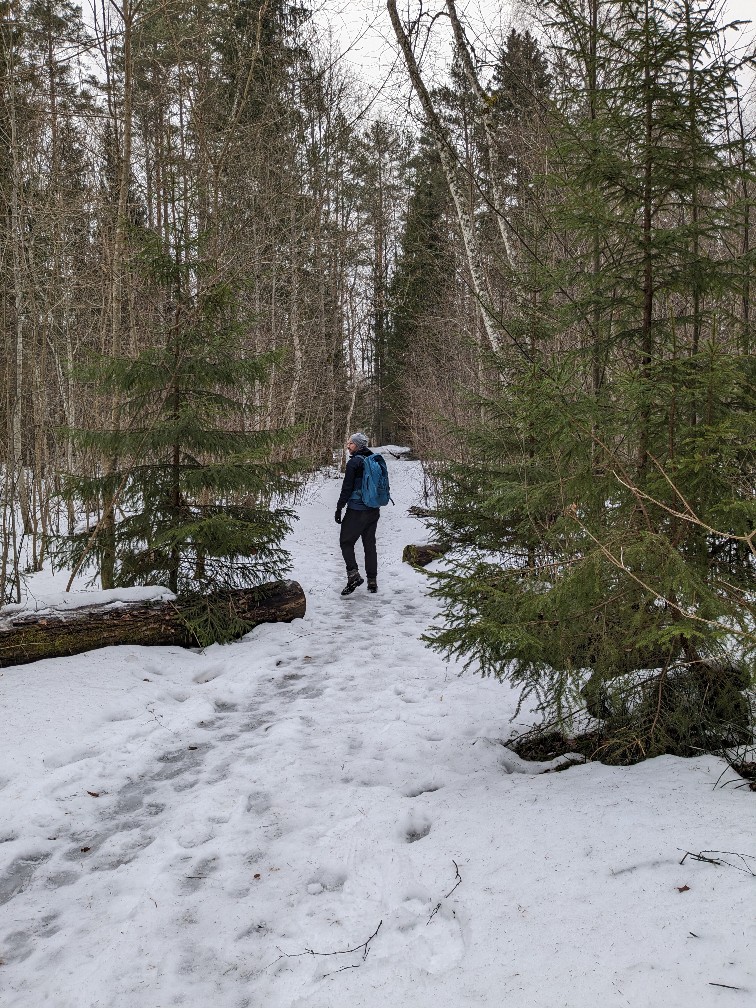
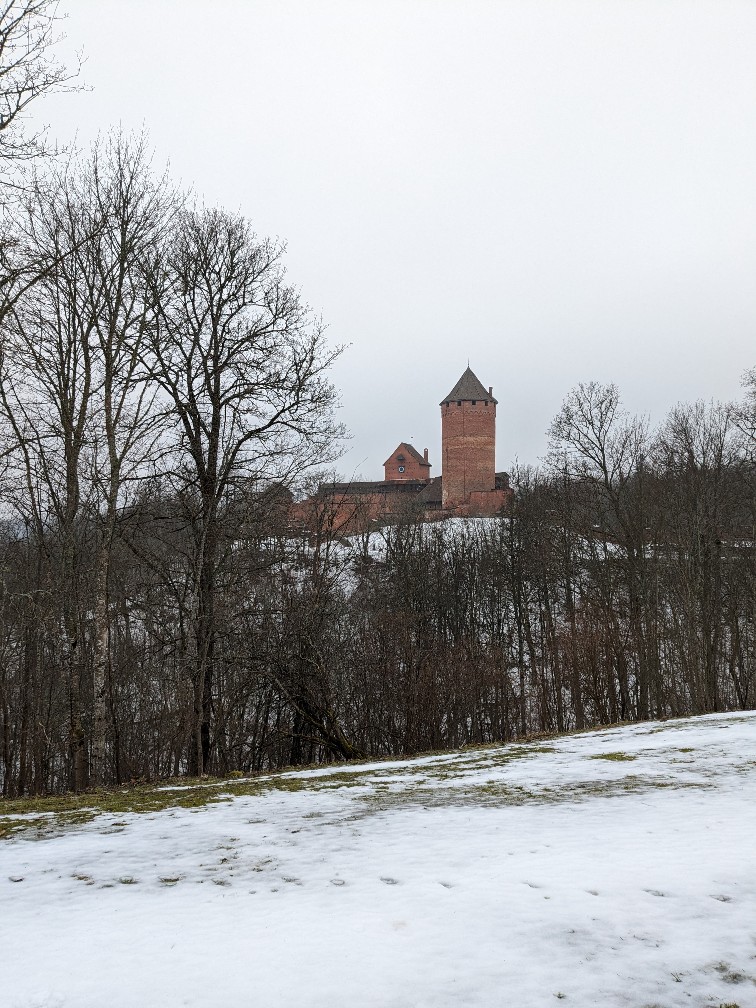
As I mentioned, my main aim for this trip was to go hiking in the snow. Gauja National Park and Sigulda in particular is a famed hiking and mountain biking destination, with plenty of well-marked trails and great sights to see along the way. Sigulda is also famed for its many castles and ruins, while the wider river bed is home to a lot of caves and cliff tops to visit.
The Enter Gauja app lists quite a few of these trails, but I found using sites like Outdoor Active and AllTrails a bit easier to navigate. I also use an GPX-app called Locus Pro which had a number of trails already marked.
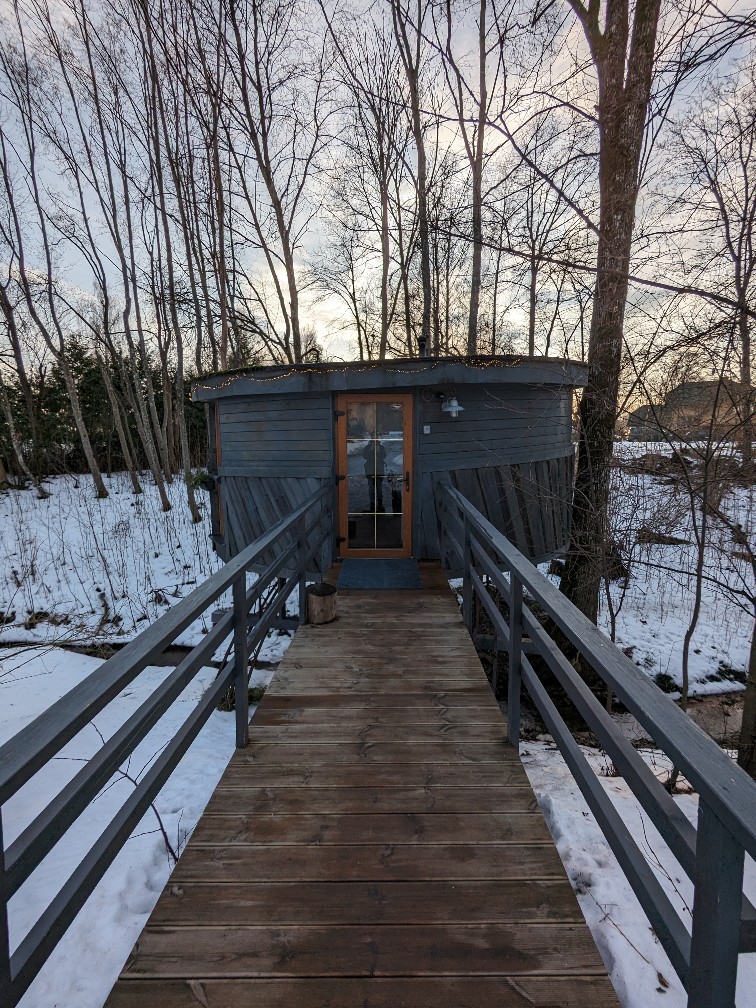
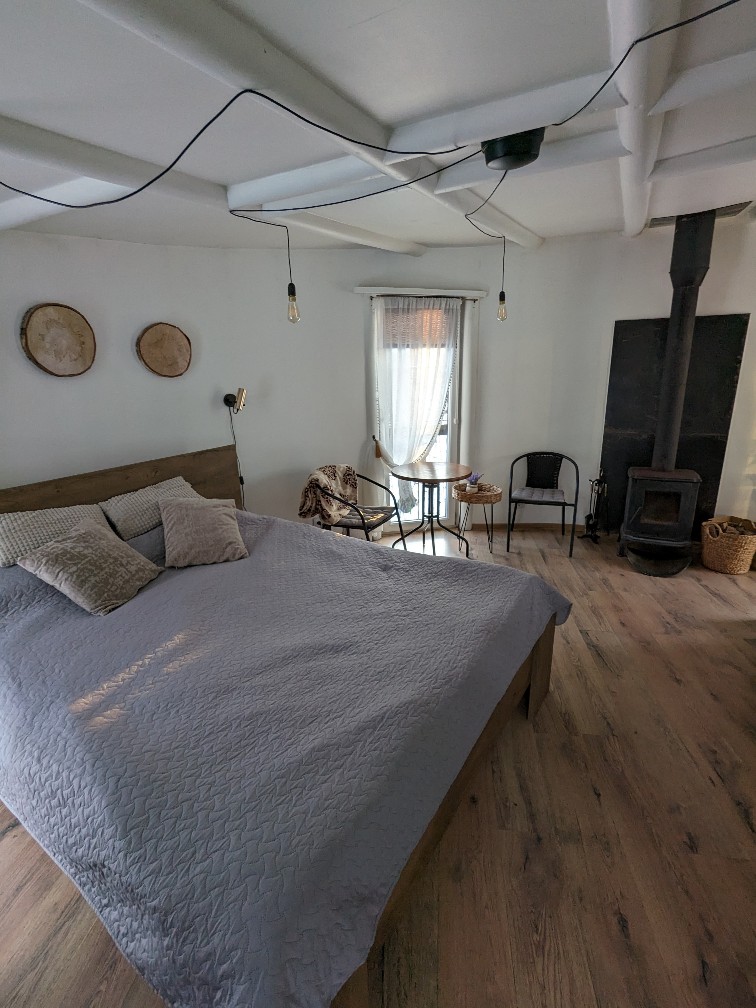
Tiny houses in Latvia
The second reason this area spoke to me was that I’d seen previously that Latvia has a high number of really nice tiny houses – specifically a lot with outdoor hot tubs and/or indoor saunas. I have friends who absolutely love a tiny house, so I thought that a nice cold wintry break would be a good chance to try it out myself for the first time. Airbnb has a great collection of tiny houses in and around Gauja National Park here.
I stayed in the Round House in Sigulda (complete with outdoor hottub!) which I booked via Booking.com and was so, so cosy. The only downside was the location, which was a good 20-25 minute walk from Sigulda’s sparse offering of restaurants and shops.
Visiting Latvia in winter: my intinerary
I had three nights in Latvia in total and below is how I spent my time:
- Day 0: land in Riga, lunch in Riga old town, evening in Sigulda
- Day 1: hiking in Sigulda
- Day 2: day trip to Cesis
- Day 3: early train to Riga, few hours in Riga before flying home
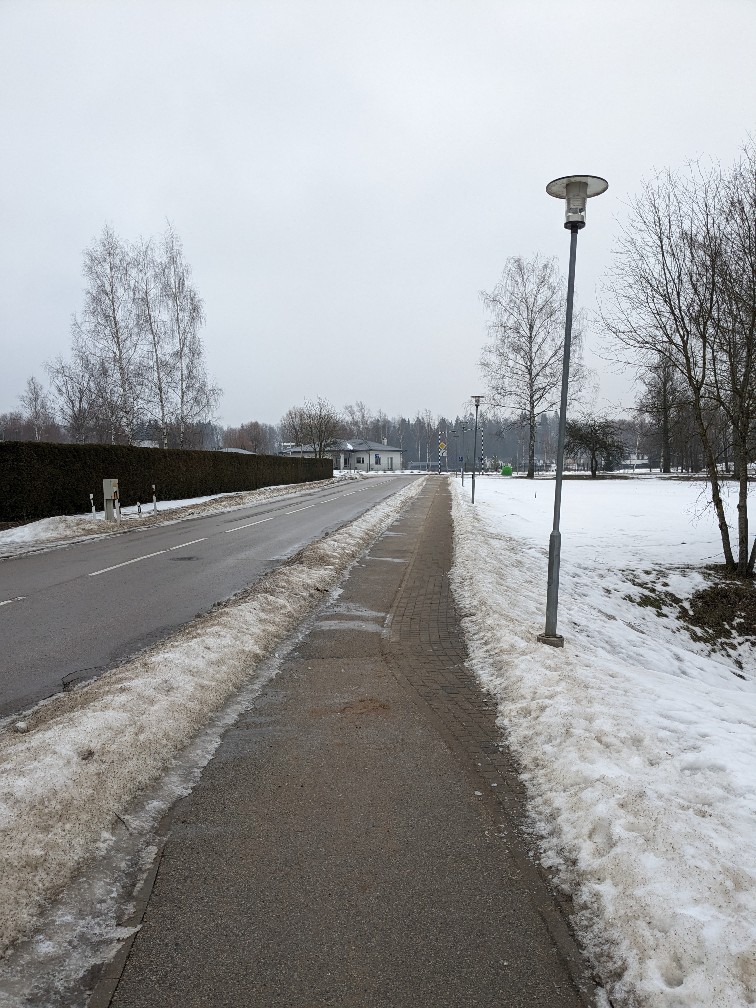
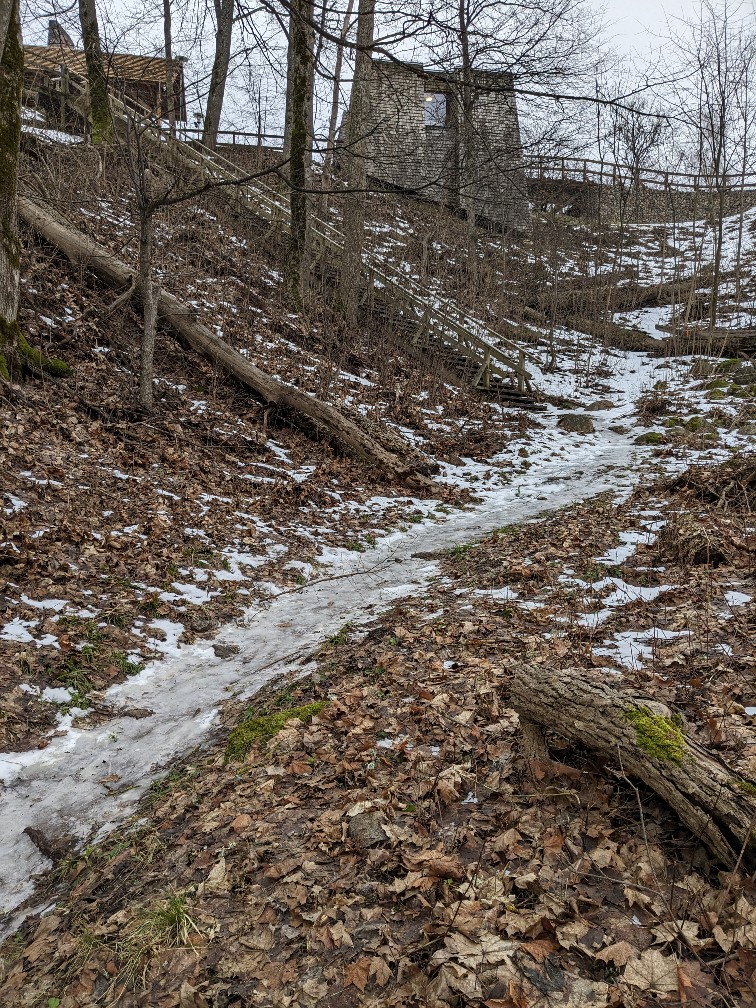
Planning vs. Reality: the weather
Now, my trip did not entirely go to plan. Did I still see snow? Yes. Did I still manage to do some hiking? Yes. Was it the hiking trip I had planned? No.
The problem? Ice. Lots and lots of ice. The few days I was there and the few days before had all been around 0°C – reaching maybe up to +2° or +3° during the day and dropping back down to -2° or -3° at night. This meant the top layer of ice was melting during the day and creating small pools of water and then melting again over night, leading to layers of beautifully clear, beautifully smooth ice. For reference, here’s how Sigulda looked just a week or two before my visit: The best things to do in Sigulda.
In Sigulda itself, this wasn’t a problem as all paths and roads had been cleared and salted – but the hiking routes down into the valley were a slippery obstacle. Once on the forest floor, there was enough snow for decent grip, but any inclines or steps in the forests were a no-go and it was pretty limiting actually.
I still managed a very decent day of hiking in Sigulda, but my day two became a day trip to Cesis in lieu of a second hike.
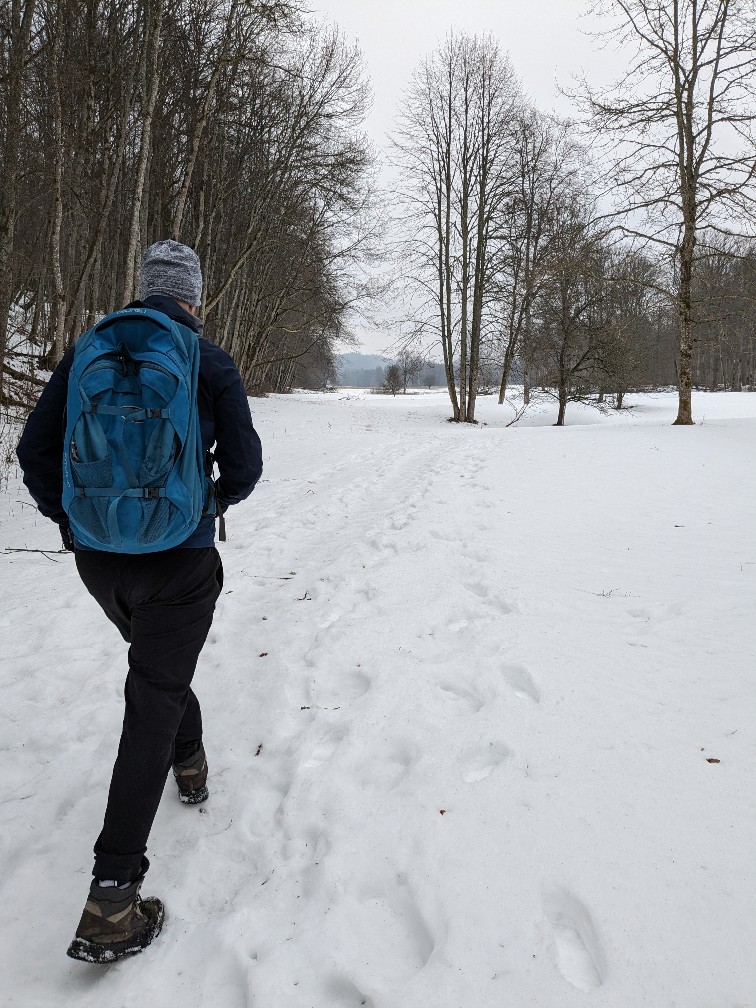
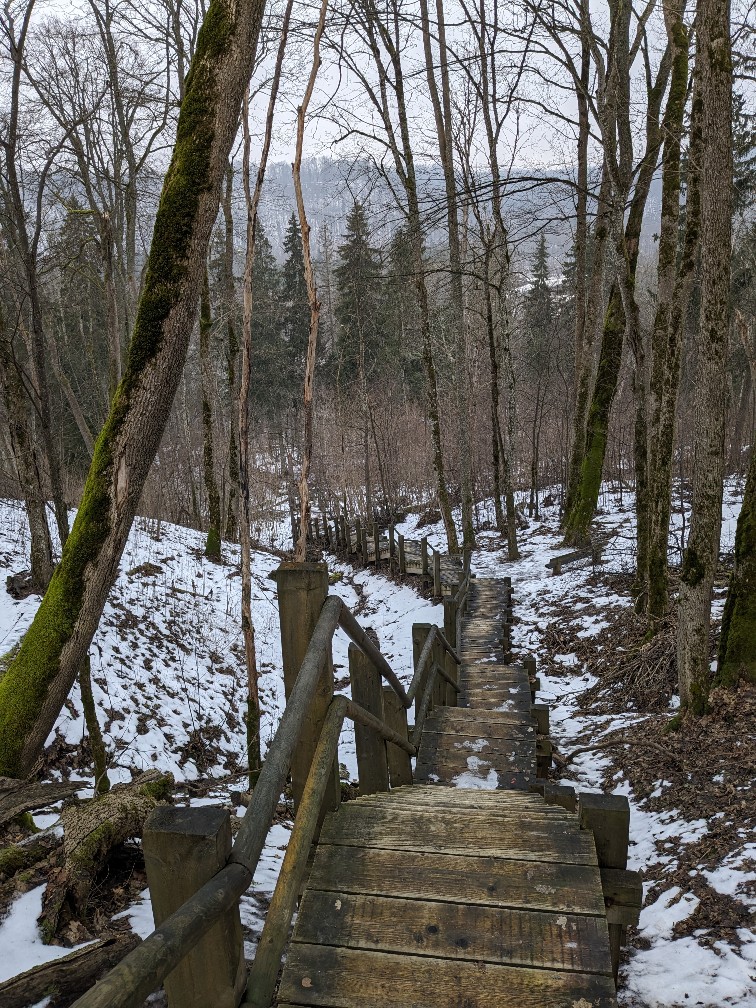
Day one: hiking in Sigulda in winter
As mentioned, my original plan was to follow a route that would take in Sigulda’s new and old castles, the imposing castle (Turaidas Pils) at Turaida across the valley and the ruins at Krimulda. And as also previously mentioned: that’s absolutely not what happened.
I visited the old and new castles at Sigulda and then found myself with a challenge: how to get down to the river in the valley below? The first woodland trail had completely frozen over with several layers of ungrippable ice and the main road looked similar dicey. In the end, I found a gigantic wooden staircase which was safe.
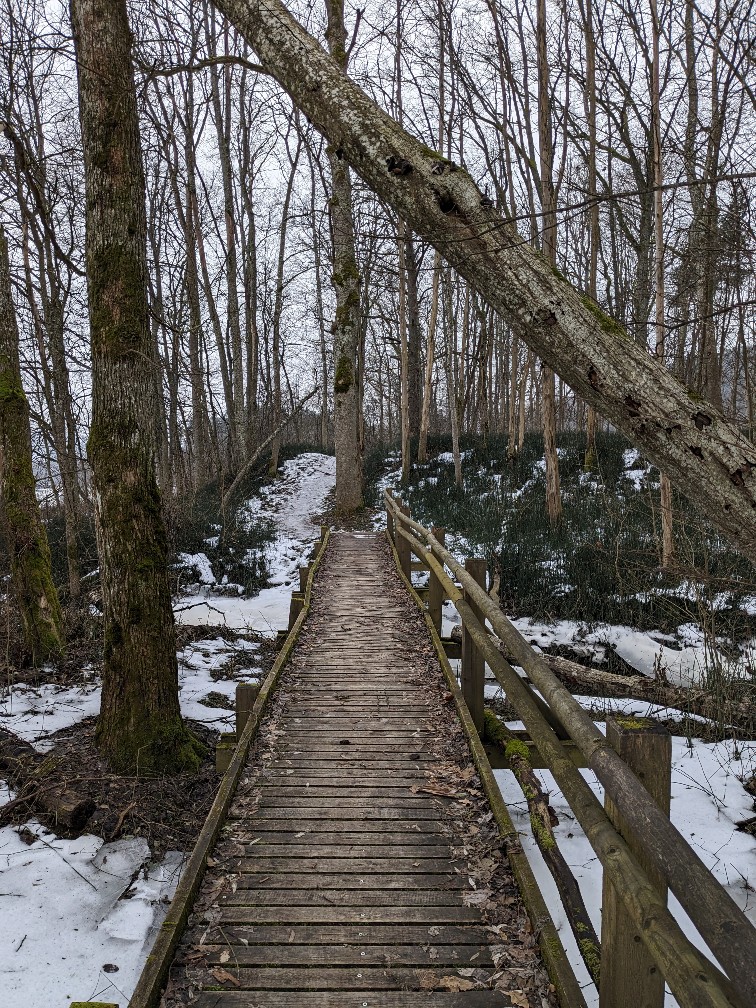
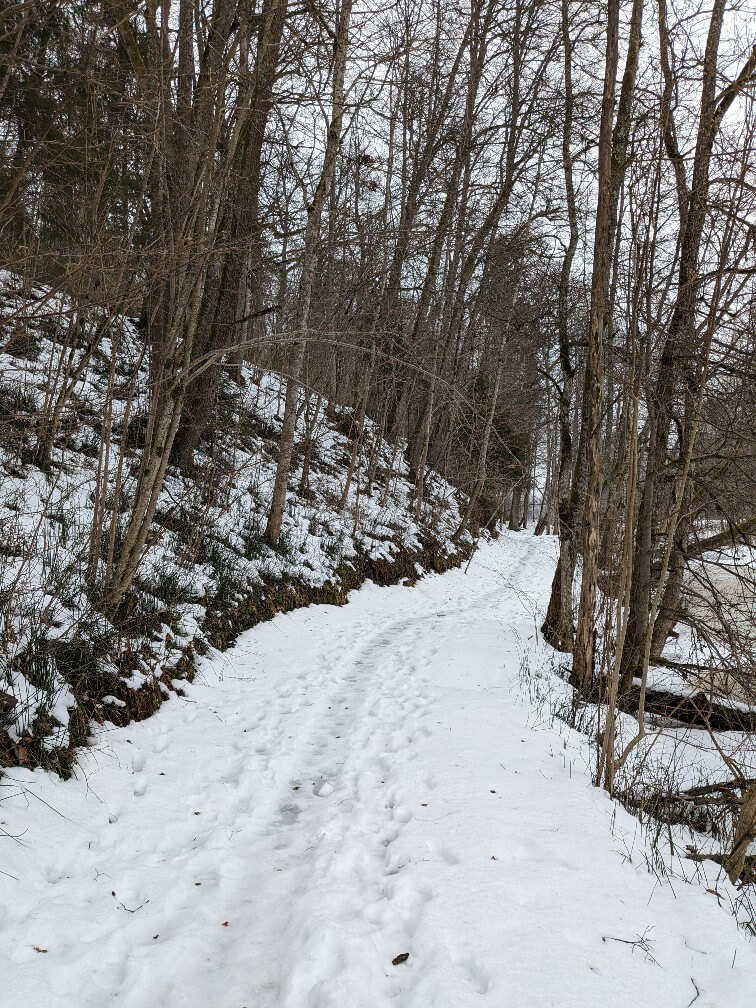
At the river, I decided to simply walk in one direction as far as I could, before hitting an impassable inclide with wooden steps carved into the earth. I then turned around and did the same in the opposite direction, heading north up the river. There, I managed to scale a sturdier staircase to a good viewpoint of the castle at Turaida, but after lots of near misses, I headed back down.
Top tip for hiking on ice: don’t go down anything you don’t think you’d be able to get back up!
The snowy forest path was beautiful and exactly what I was hoping to find in Latvia… just a bit more easily. In the end, I managed a decent 18km hike, so I still got a good day’s worth of hiking.
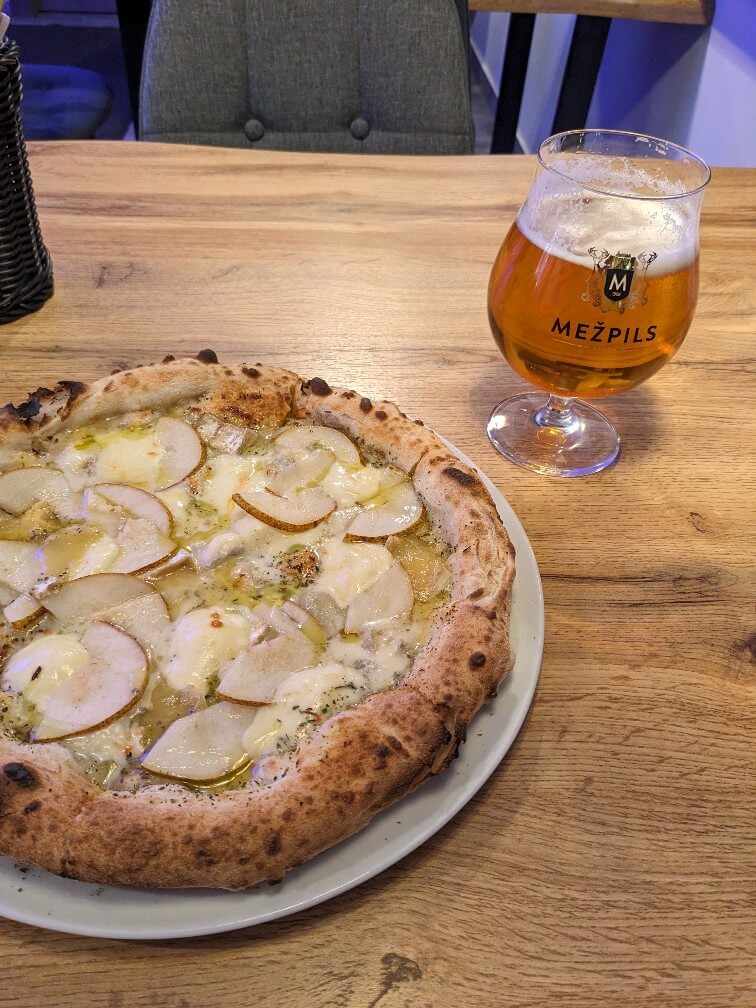
Eating in Sigulda
As my accommodation was set quite a way away from the restaurants and shops of Sigulda, I did a little grocery shop on my first evening to have a few meals at home.
However post-hike, I went to Full Moon and had one of the top 3 pizzas I’ve ever had in my LIFE. It was a 5-cheese Neapolitan-style pizza, with pear and honey and absolutely smothered in garlic oil. I have not stopped talking about this pizza since. It changed me.
The post-hike, post-pizza hot tub was also a nice way to end the day.
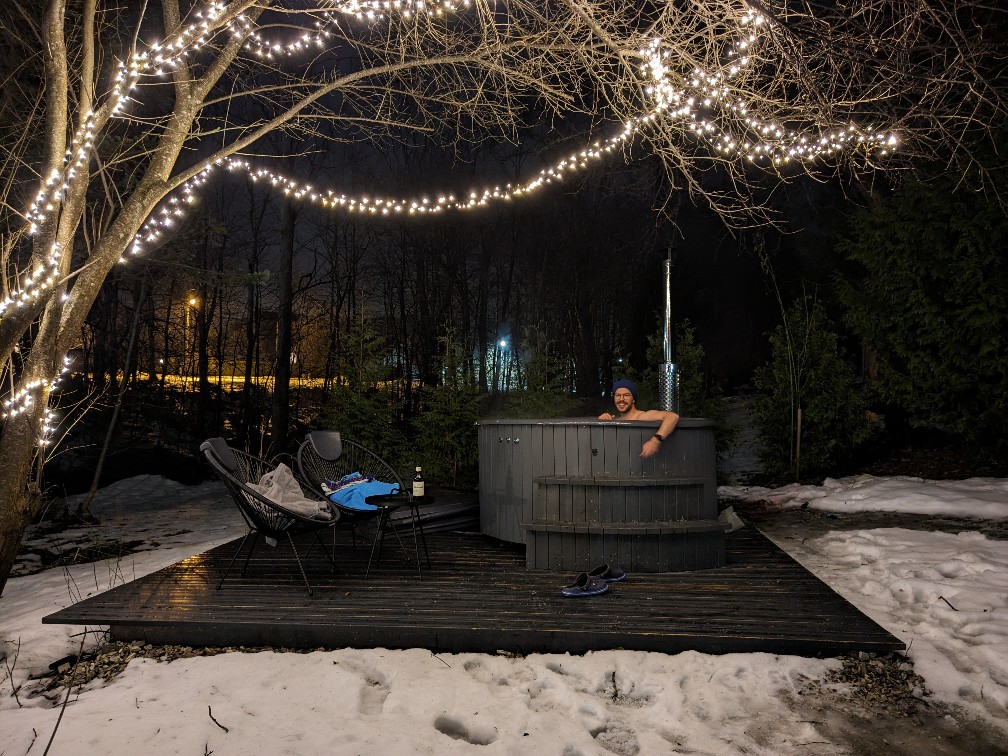
Day two: a day trip to Cesis
Controversially, on the second day of my two-day hiking trip, I decided to not hike. It was the right decision. Instead, I took myself off for a day trip to Cesis, the neighbouring city in the centre of the Gauja National Park.
Why visit Cesis? To explore Cesis castle, the town’s premier landmark.
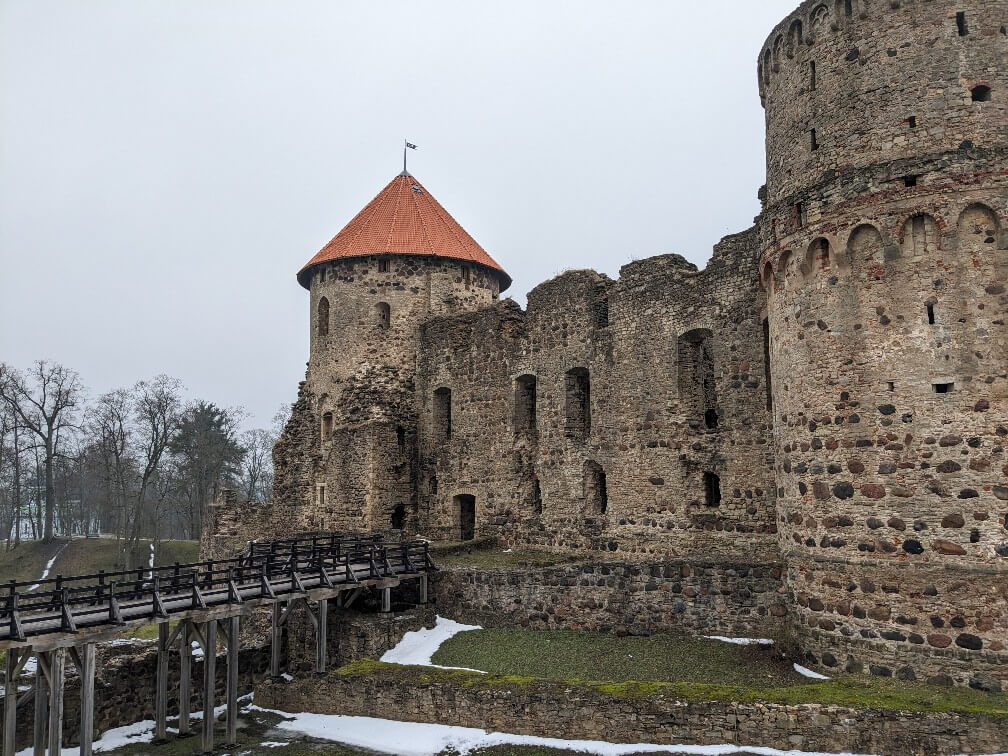
Arriving in Cesis honestly felt a world away from Sigulda – Cesis feels like a small bustling city. There’s plenty of traditional houses, side by side with more Russian or Soviet-feeling concrete blocks and a really pretty main street with pastel-coloured buildings and cobblestones.
I did feel sorry for Cesis though, as I was there on the most miserable day – depressing grey skies, mist, fine rain and the remains of ice on the streets. It was a hard day for any town to look good in pictures. Check out this post from Backpack Adventures to see Cesis looking lovely in the snow just a fortnight before my visit.
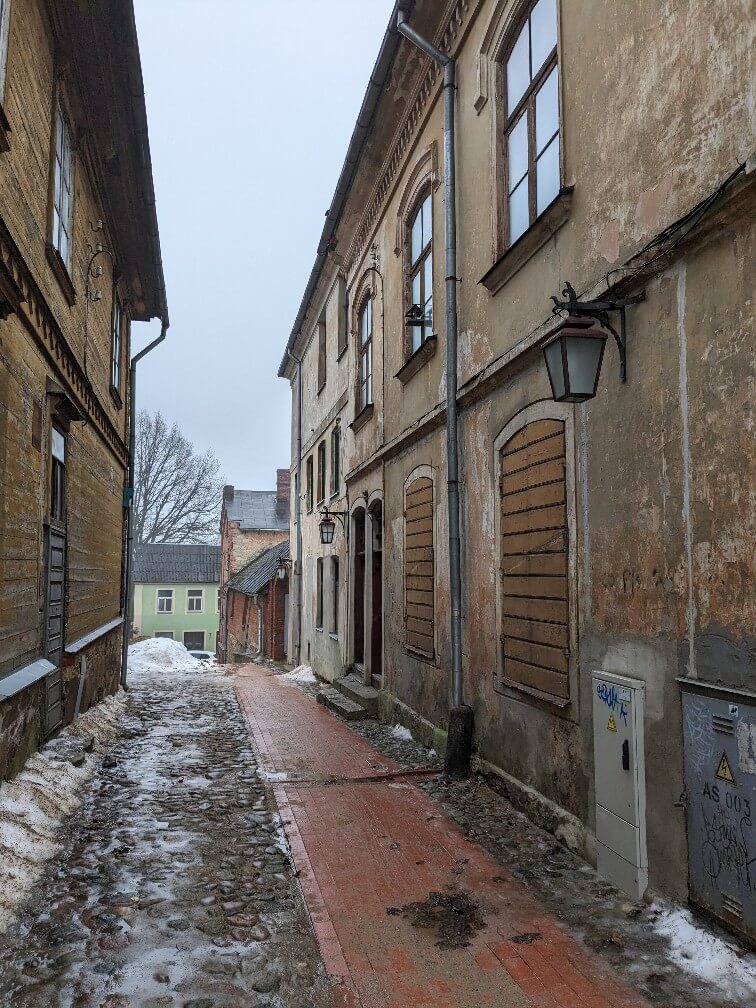
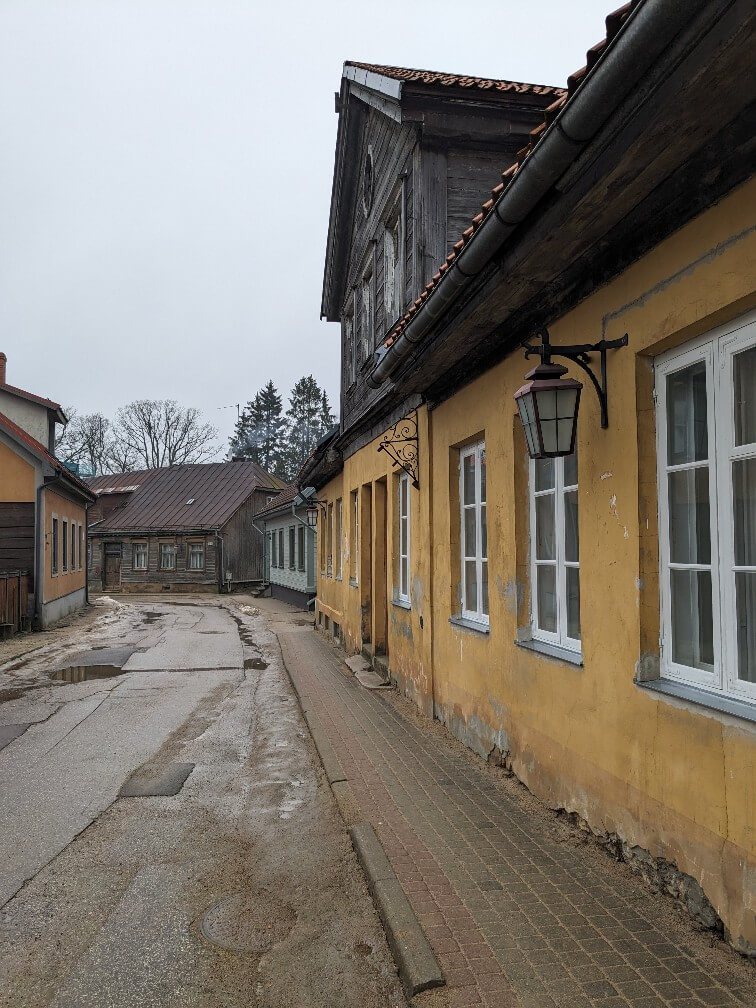
Top tip: Cesis is hard to pronounce. I thought it was „che-sis“ but it turns out it’s more like, „tseh-sis“ but spoken very quickly with a thick Latvian accent. Simple.
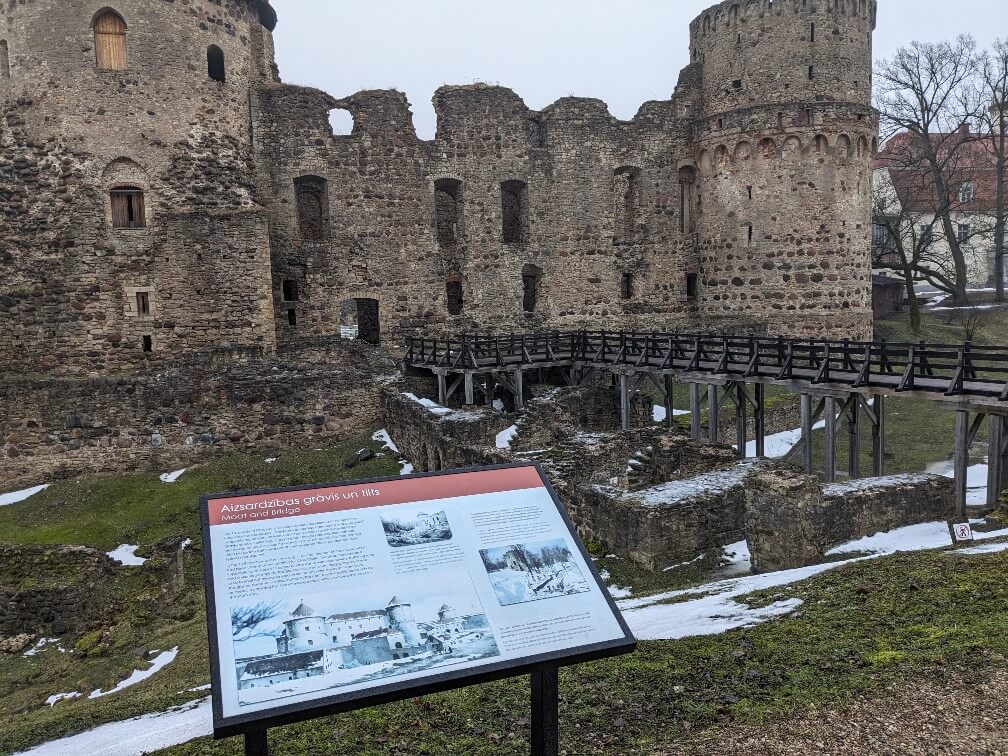
Cesis castle
If you’re ever googling things to do in Gauja National Park, I guarantee that Cesis Castle will likely come up on top. It came up often in my research, so it was natural to start my time in Cesis there.
I’m not sure what I was expecting really, but I can say that the castle is awesome and well worth a visit – probably the most impressive castles I’ve visited east of Poland. The medieval ruins are pretty expansive and so there is plenty to explore… with your own hand-held candle-lit lantern!
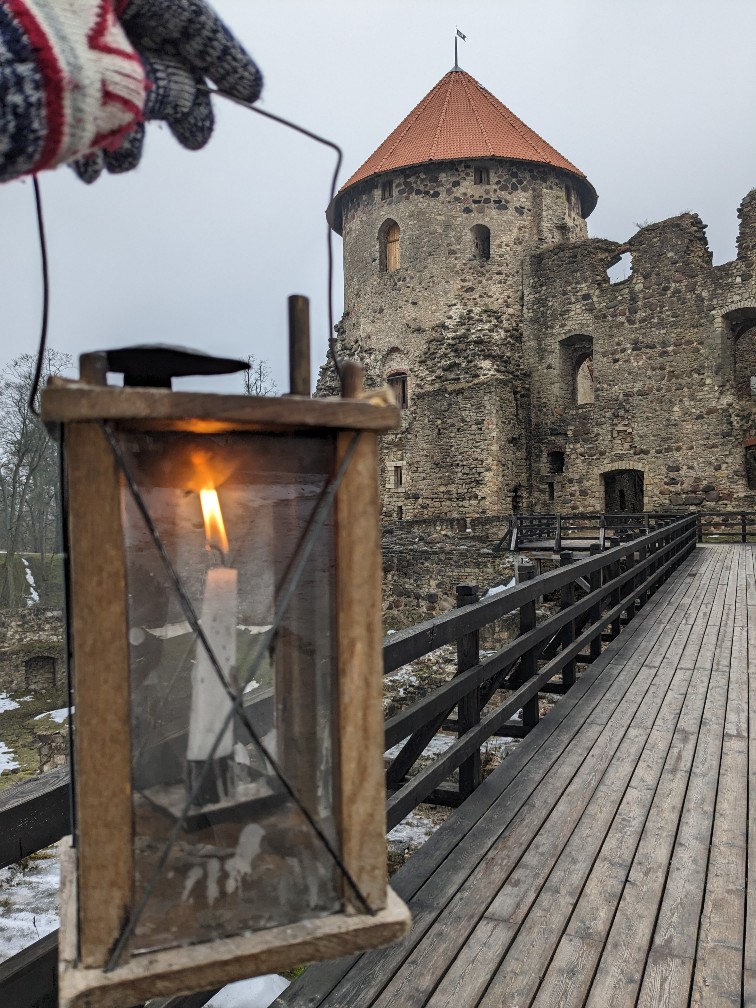
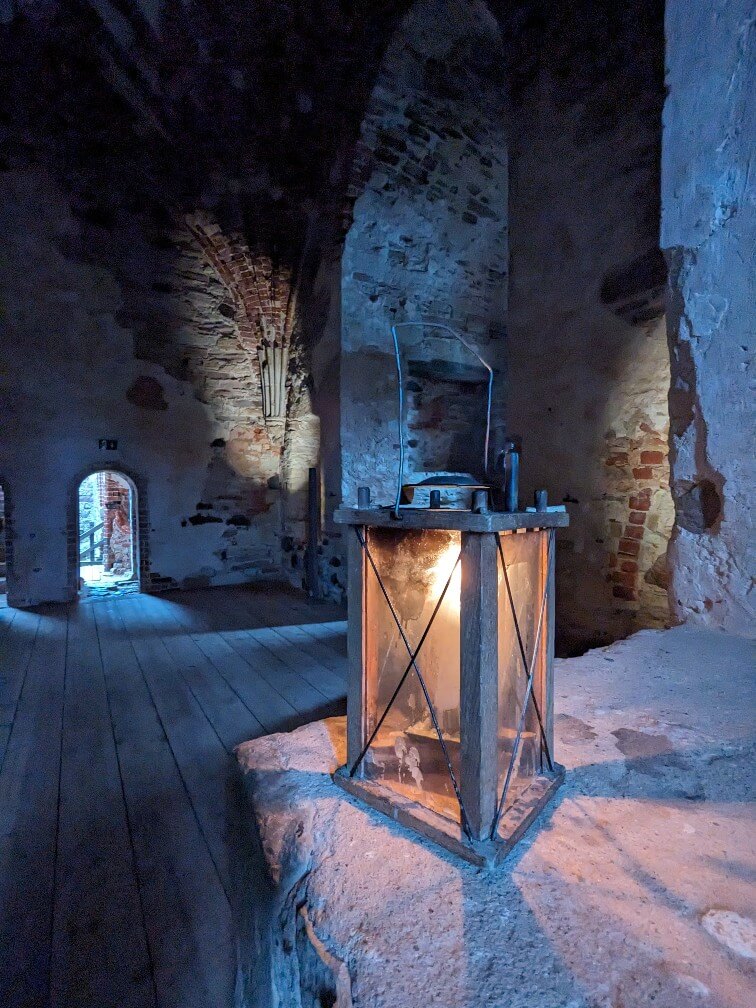
I was casually given this on entry as parts of the tower are dark inside and it seemed absolutely mad but did really add to the experience. (I had an absolute whale of a time with the lantern, I’ll not lie.) There are several buildings which are still being (very slowly) renovated, but there is still a lot to explore.
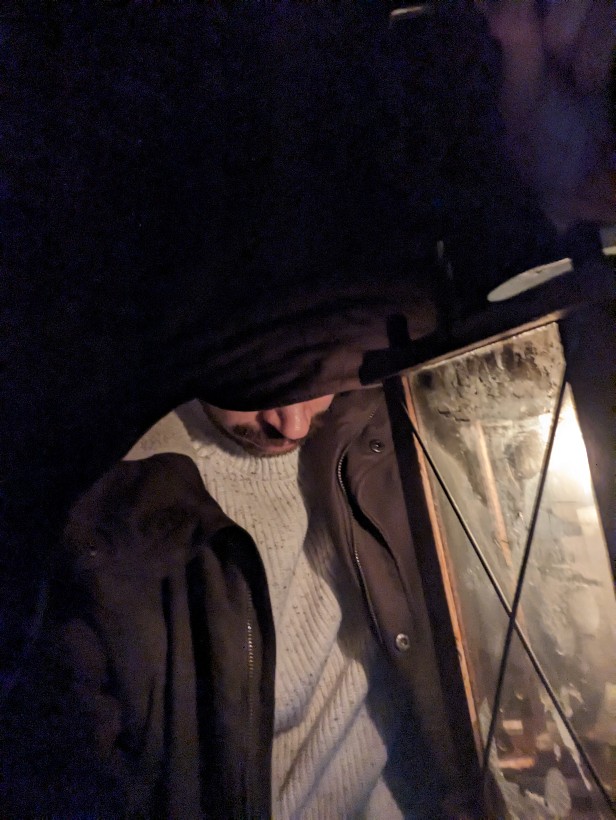
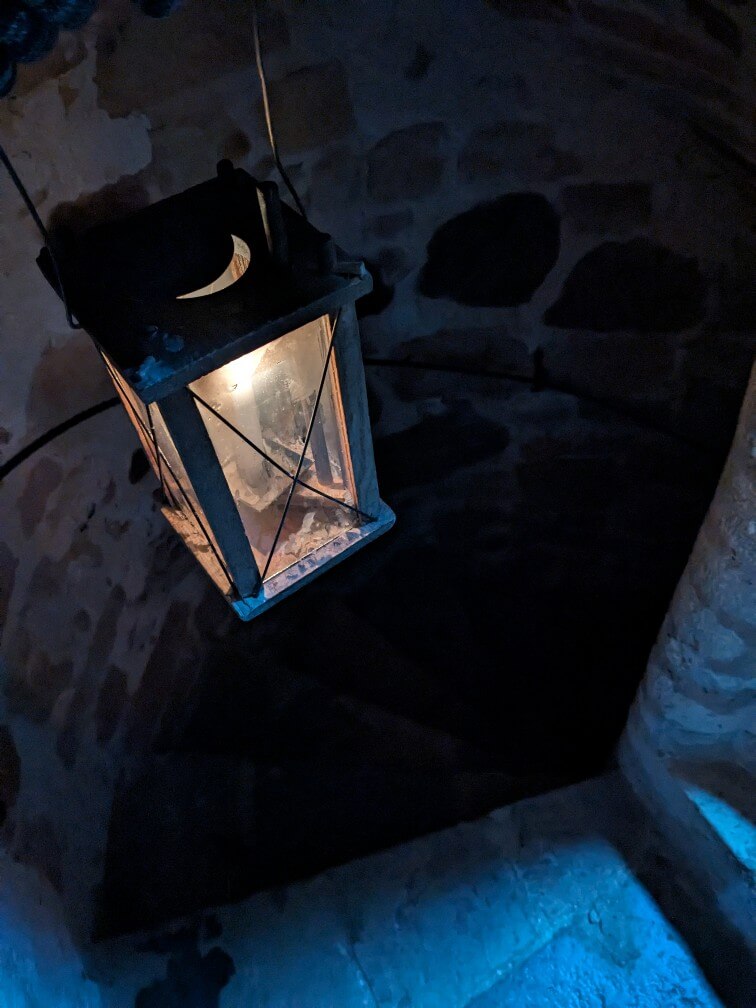
Cesis castle museum
The history of the castle is pretty interesting too. Despite standing for 300 years without being conquered, the castle’s luck changed during the Livonian Wars, when the castle was besieged in 1577. After five days of bombardment, the approximately 300 people inside decided to blow up the castle, killing themselves, rather than letting it fall to the enemy. It remains one of the biggest instances of mass suicide in European history. The remains of victims of the explosion have been unearthed as recently as 1985.
The accompanying indoor museum, housed in the New Castle (which is really more of a palace) is also really interesting. It chornicles the history of the castle, including the treasures and approximately 1,000 coins that were found in 1974, alongside a woman and two children who had died during the explosion. As well as the history of the castle, the museum also covers the birth of Latvian national conciousness.
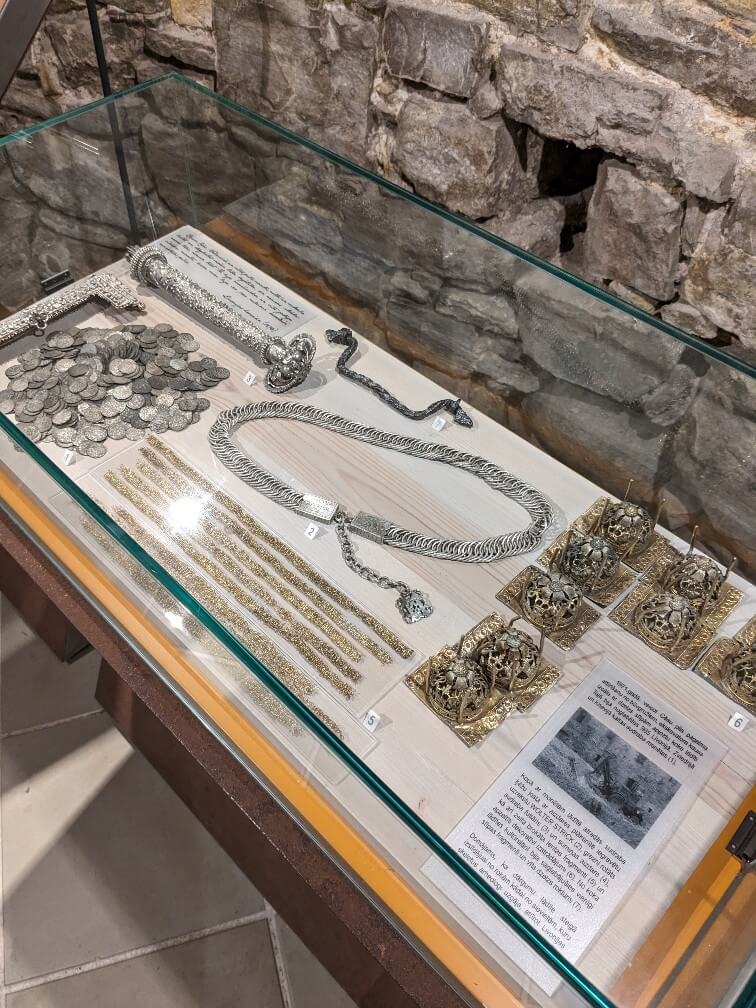
Cesis: Latvia’s most Latvian town?
Probably about a decade ago when I had first started blogging, I read an article by a traveller who claimed that Cesis was Latvia’s most Latvian town. For some reason, this really stayed with me and the exhibits in the castle museum really make a compelling case.
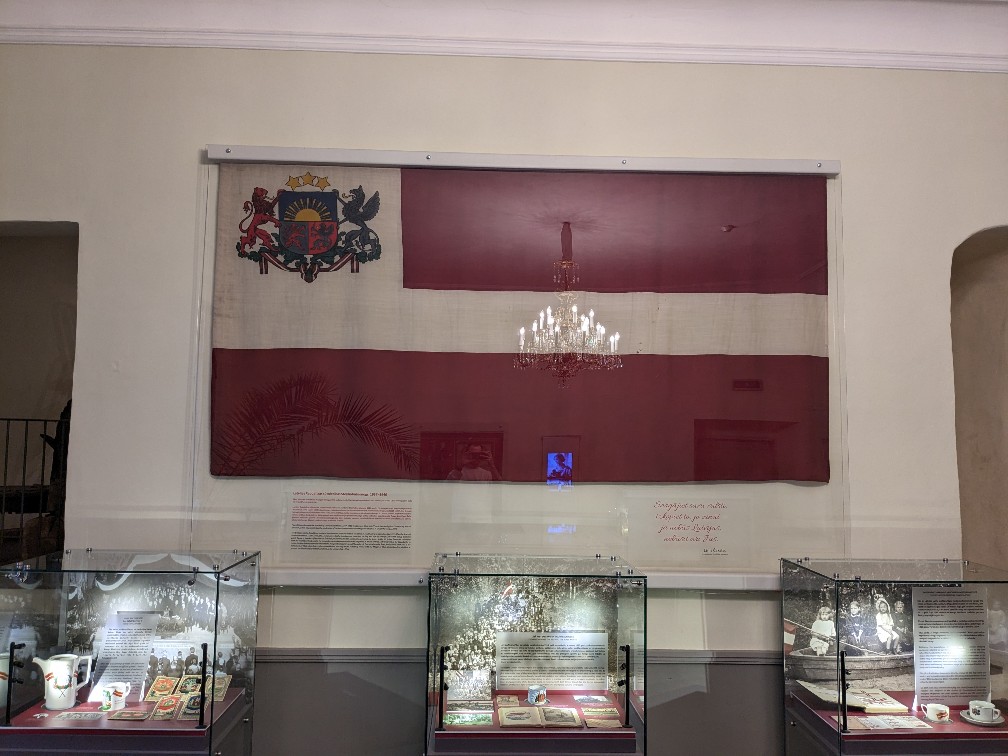
One room explores the development of Latvia’s national flag, which is based on historic descriptions of the banner once flown from Wenden (the historic German name for Cesis). I found this room really fascinating as it’s not something I know much about: Latvia is a much more recent concept than Estonia or Lithuania and was historically made up of other regions and duchies like Livonia and Courland. Unfortunately much of this history was suppressed during the Soviet occupation with many things related to the national flag destroyed (the huge flag on display was actually from the Latvian embassy in Stockholm). The exhibits also describe how Cesis briefly became the capital of Latvia in 1919 and that the song that became the country’s national anthem was first heard in Cesis during the city’s All-Latvia Song Contest, which began in 1870. Latvia’s most Latvian town? It certainly feels like it.
Overall, I would recommend two hours minimum to explore the castle and the museum. More if you want to enjoy the Castle park, which looks amazing online but was an icy, barren deathtrap when I visited.
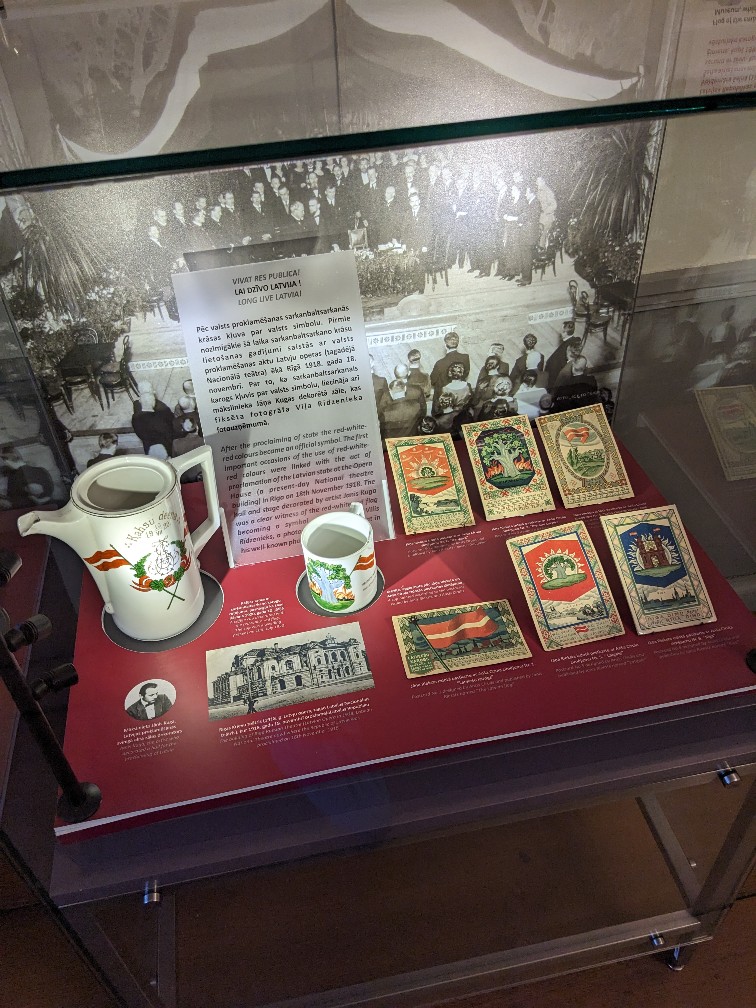
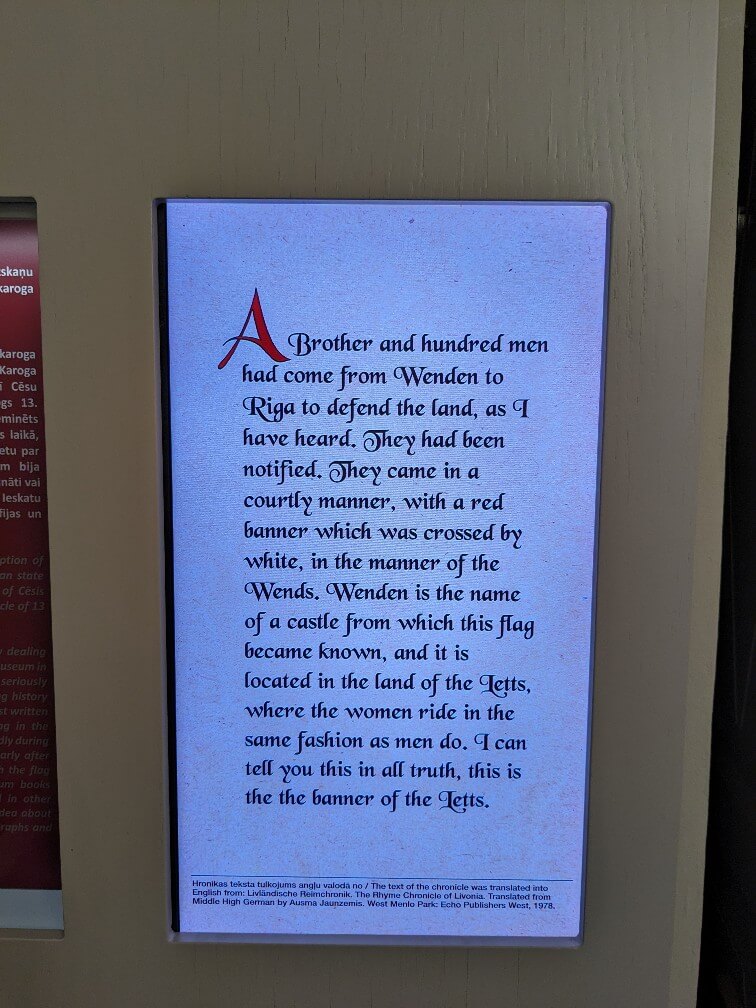
Day three: the Riga Ghetto and Latvian Holocaust museum
On my final day in Latvia, I headed back to Riga mid-morning and had a few hours before I needed to be at the airport. On my last visit in 2011, I visited the fantastic Occupation Museum. This time, I decided to explore another part of Latvia’s history at the Riga Ghetto and Holocaust Museum.
Located on the site of Riga’s former Jewish ghetto, the museum is a really extensive collection of artefacts, stories, maps and art chronicling the history of Latvia’s Jewish population and the impact of the Holocaust on the Baltic States and Eastern Europe. The museum is really well put together and I’m really glad I visited.
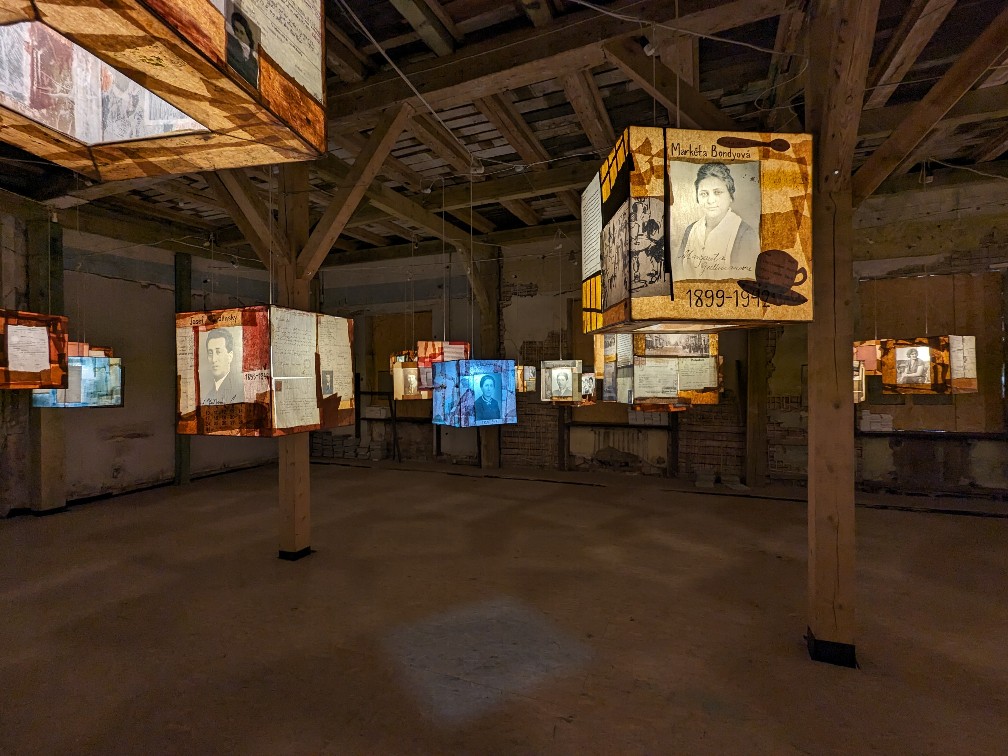
Tips for visiting Gauja National Park in winter
Where to stay: Cesis vs. Sigulda?
Another topic I saw discussed often online was: is it better to visit Sigulda or Cesis? It’s a good question, because before my visit, I hadn’t appreciated just how different the two were from one another.
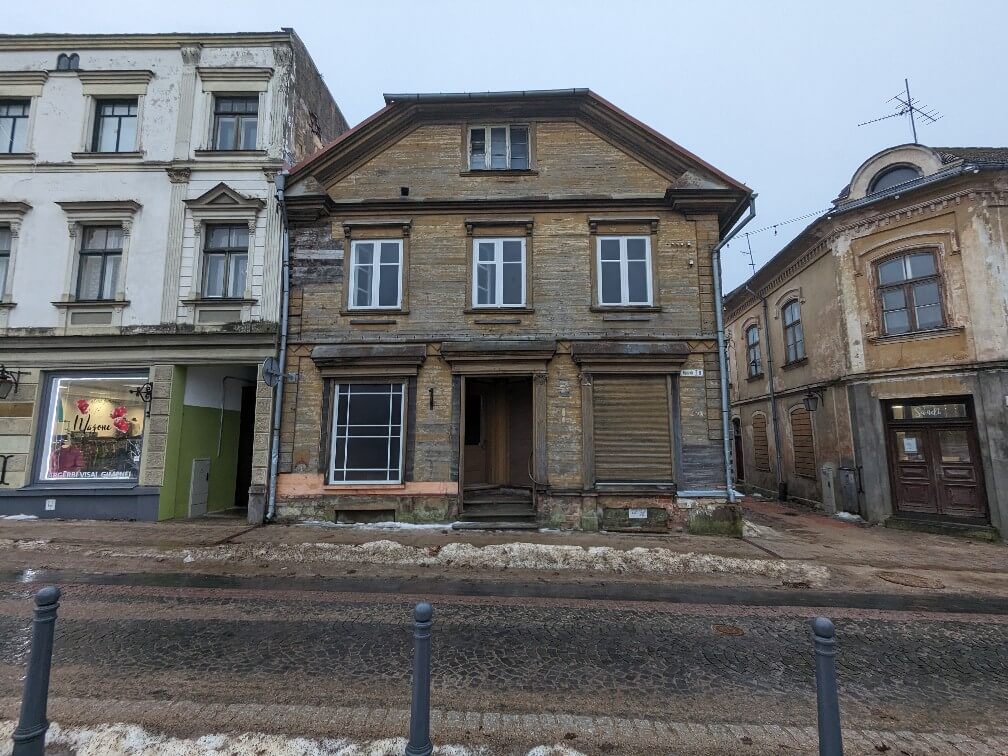
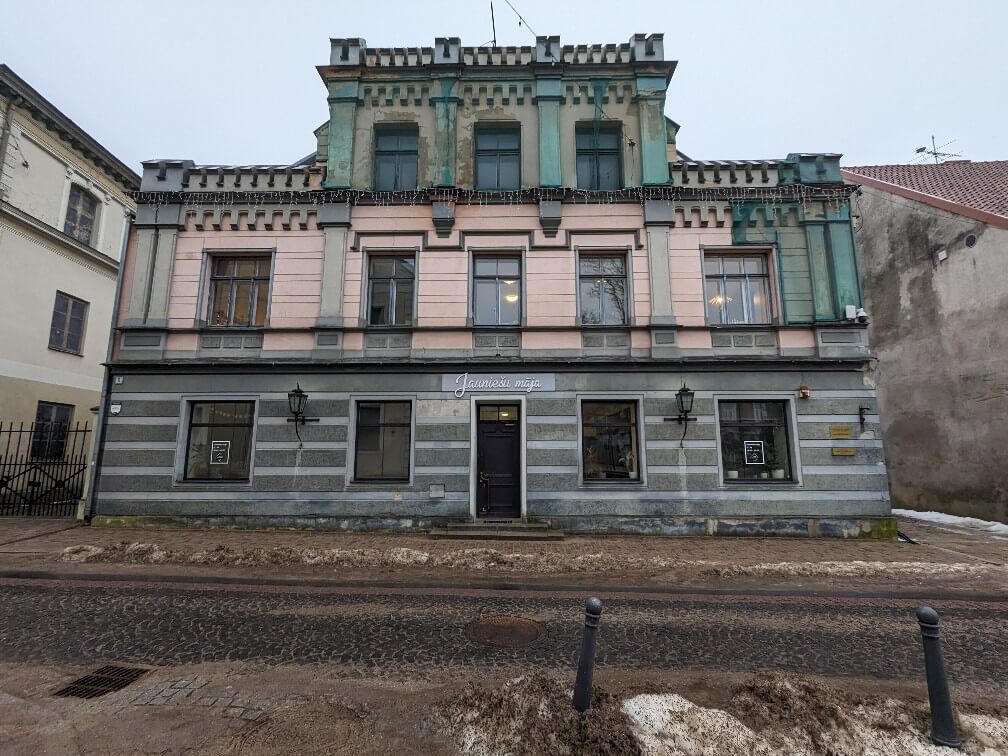
Cesis feels like a small and bustling city. You arrive at the train station and you are immediately greeted by some busy streets and a short walk to shops and restaurants. It definitive town centre with cobbled streets and traditional buildings.
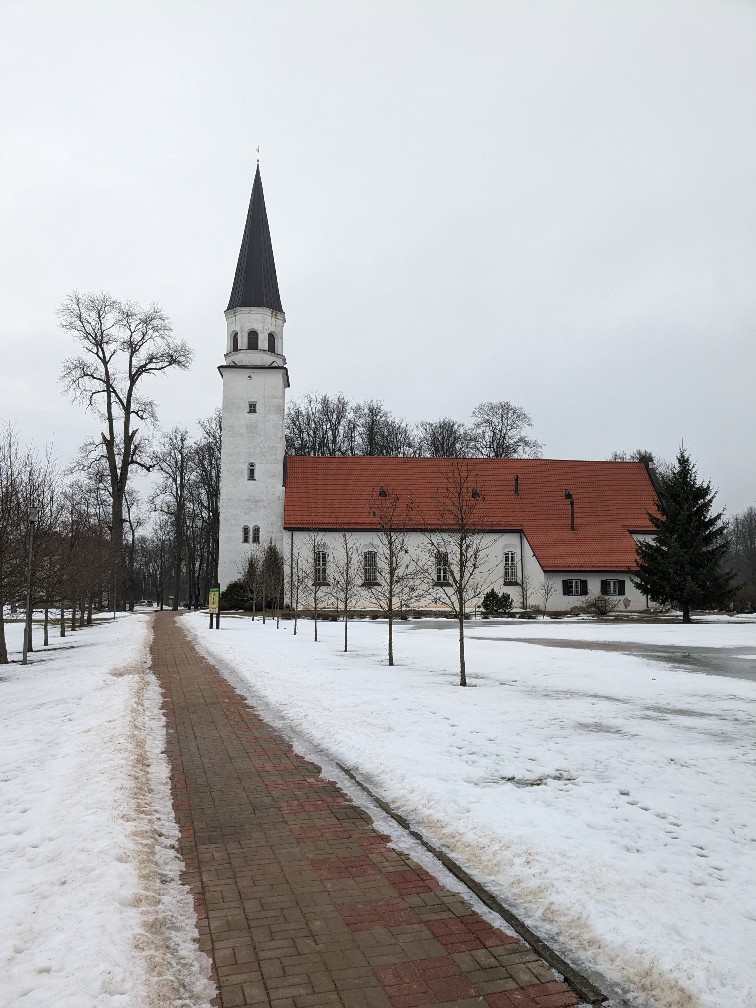
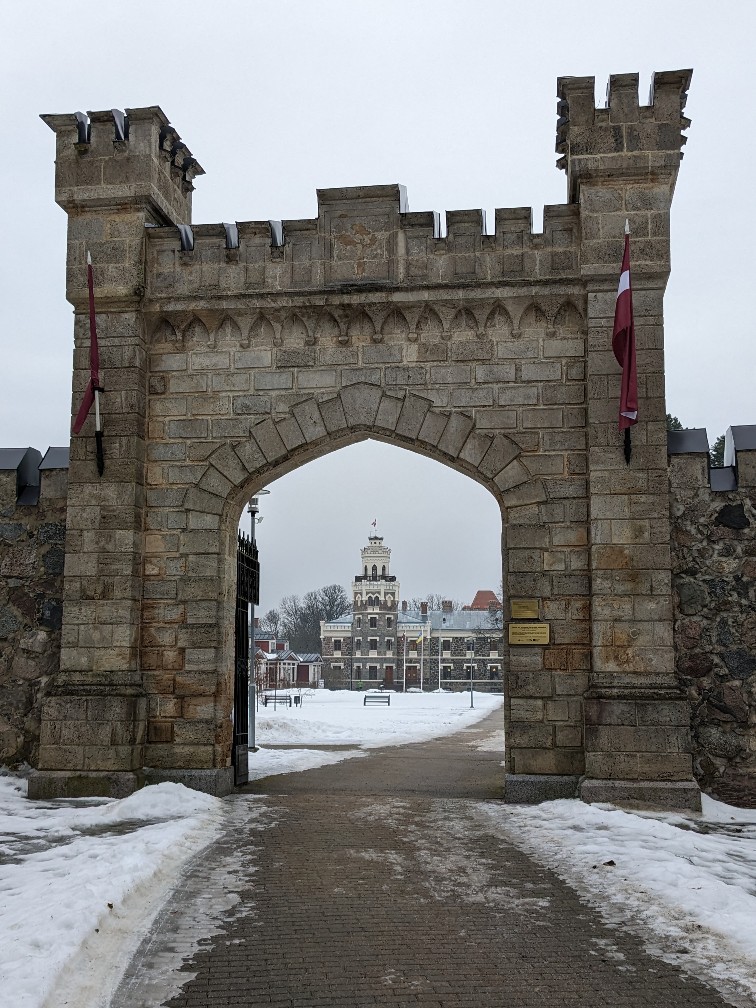
Sigulda, however, is a very sparse and quiet large village. There is no discernible town centre, just a concentration of restaurants and shops near the train station. The buildings themselves are very spread out and my accommodation was a 25-minute walk from the nearest restaurant. However, for its lack of urban feel, Sigulda feels very much in the countryside and its concentration of castles and ruins means it’s the best place for hiking in the region.
So in conclusion: Cesis for a day trip or if you want to base yourself in a busier area. Sigulda if you want peace and quiet and to be closer to nature. But luckily, it’s only around 45-50 minutes by bus or train between the two.
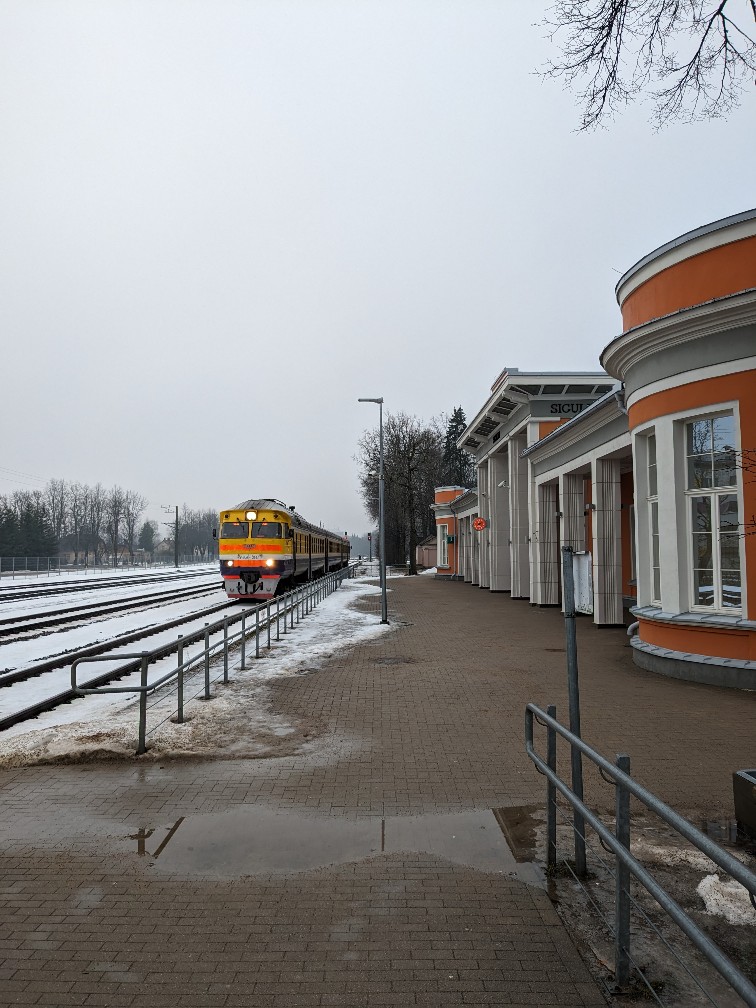
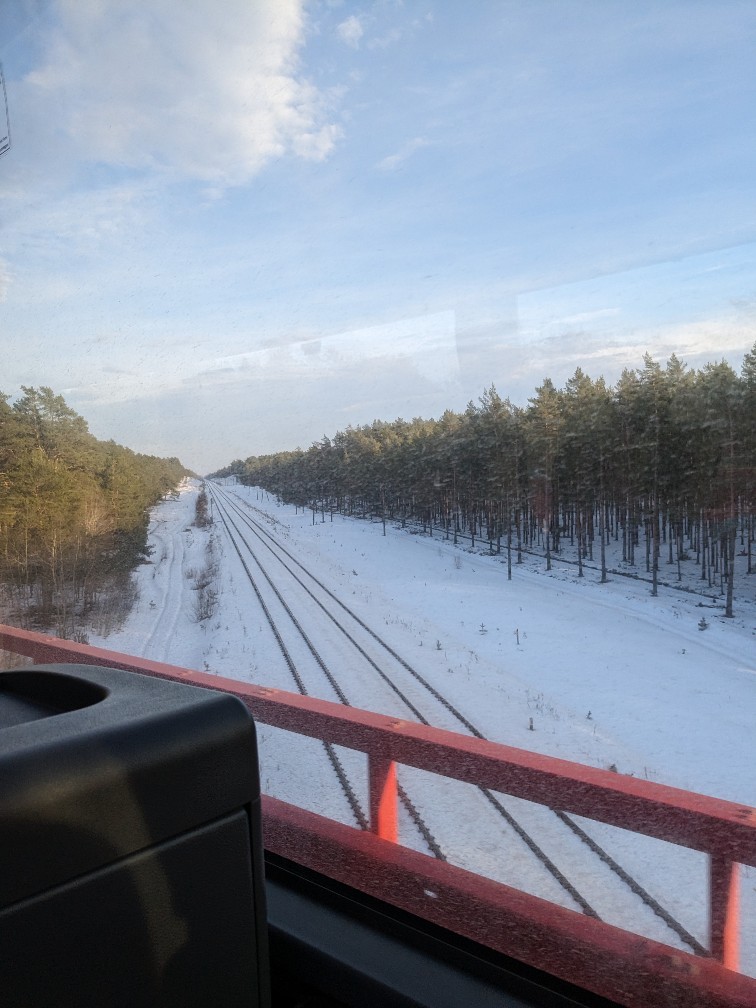
Gauja National Park: getting there and around via public transport
I found the public transport in Latvia to be really, really good. Connections are frequent, reliable, on time and cheap. I checked all times in advance on 1188.lv which I found really easy to use and is available in English. Buses seem to go more regularly and are a bit faster than trains, but I found the trains to be more comfortable.
In Sigulda, the train station is far more central than the bus stop (which stops on the main highway outside of the town). In Cesis and Riga, the bus and train stations are located next to each other. As a result, I took a mixture of buses and trains.
My bus journeys (1x Riga-Sigulda – €3.28 and 1x Cesis-Sigulda – €2.28) I bought online via 1188.lv – although almost everyone else just bought them direct from the driver with contactless card payment. My train journeys (1x Sigulda-Cesis and 1x Sigulda-Riga) both cost €2.28 and I bought them at the station in person, as mobilly.lv wanted a Latvian number to buy via the website and via the app needs you to upload €5 or €10 to your account to make purchases.
Both journeys from Riga to Sigulda and then Sigulda to Cesis take just under an hour by both train and bus.
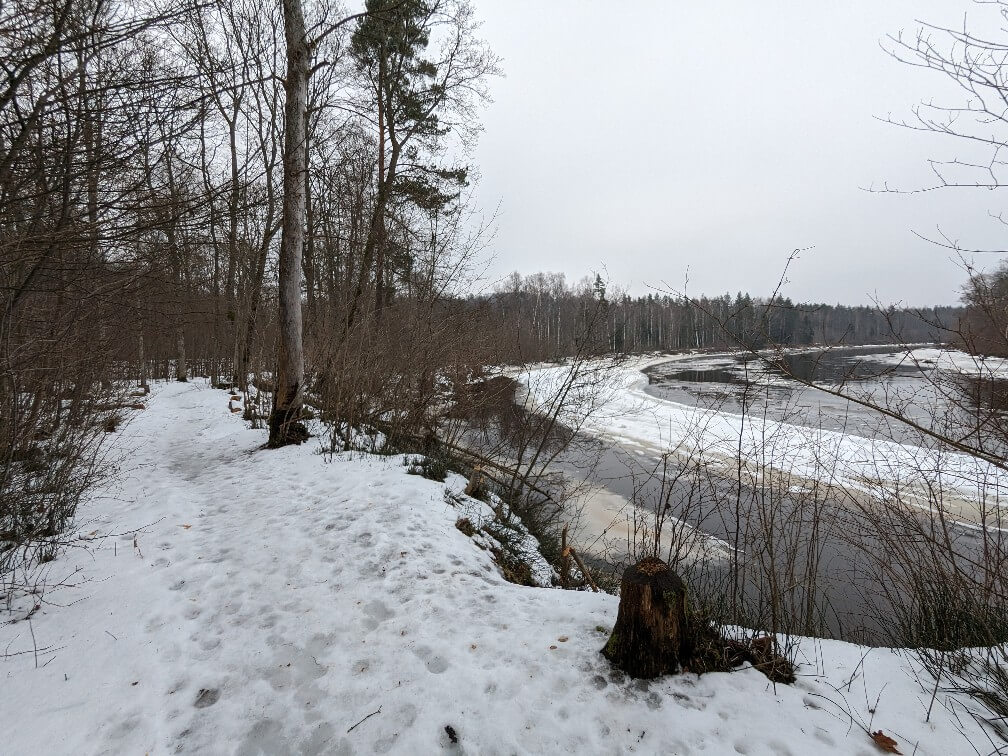
Preparing to vist Gauja National Park
To prepare for my trip, I did three things:
- I downloaded the Enter Gauja app. It has some good advice there, but it’s not the easiest to navigate for hiking trails.
- I also asked for some advice in r/Latvia on Reddit and got some really useful input straight away.
- Finally, I downloaded and listened to a Spotify Playlist of Latvian pop music and discovered some great new songs to add to my own curated playlist of Foreign Language pop.
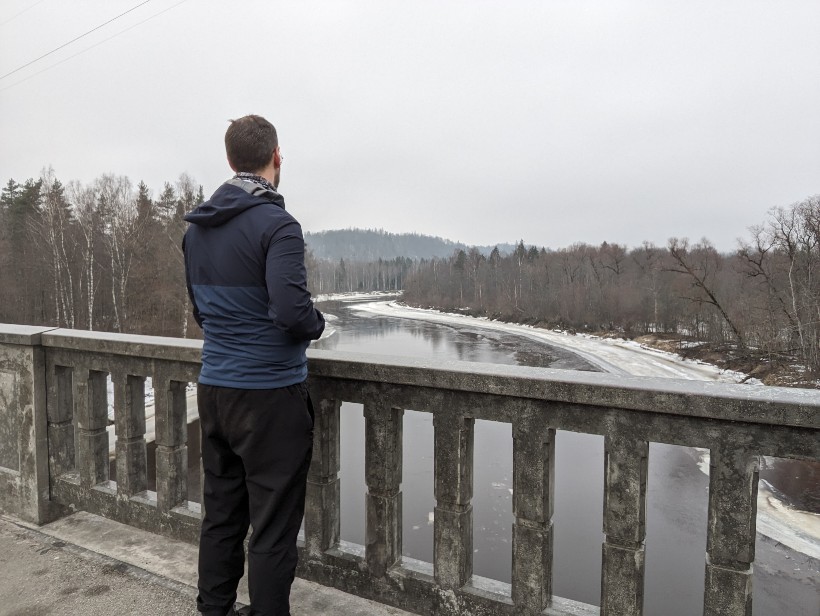
Visiting Latvia in winter: would you recommend it?
So in summary would I recommend visiting Gauja National Park in winter? Honestly, I’m not sure. I still keep thinking that my visit could have been so drastically different had it been even just a few degrees warmer – or just a few degrees colder. But maybe that in itself is an answer.
For a reliable hiking trip, I think autumn would be a much better time to visit. (And based on 90% of all tourism images I saw during my visit, this seems to be the most popular time to visit Sigulda.) Being outdoors in winter was beautiful, but very limiting and extremely weather-dependent. But at the end of the day, I wanted to hike in the snow and I did manage to do that.


Great post! Looking forward to your impressions when you visit around autumn. 🍂
Thanks Sabina! I think it may be a few years before that happens! But it does look like a lovely time of year to visit.